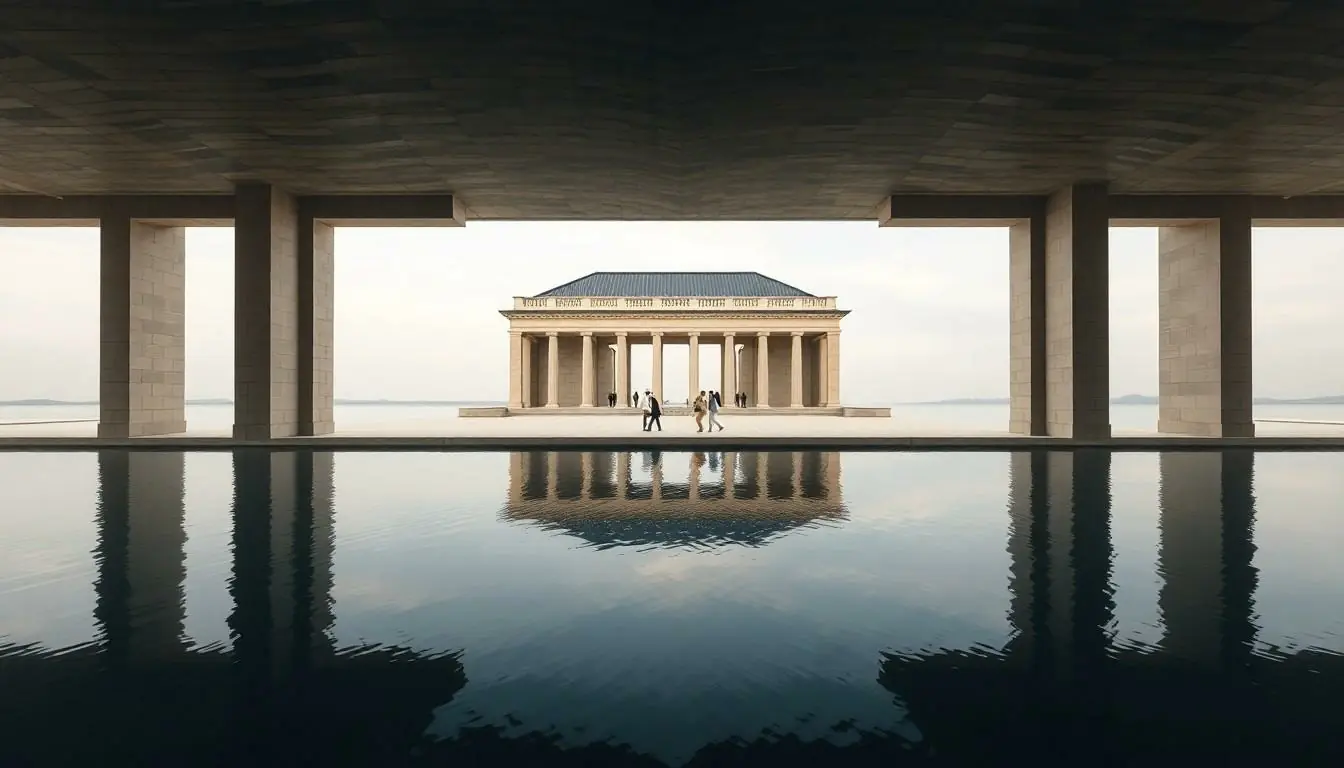In the world of photography, finding the perfect shot can feel like searching for a needle in a haystack. Enter formal balance photography, the secret sauce that transforms a simple image into a visual masterpiece. It’s like having a well-choreographed dance party where every element knows its place, creating harmony that even your mother-in-law would approve of.
Table of Contents
ToggleWhat Is Formal Balance Photography
Formal balance photography refers to the arrangement of visual elements in a symmetrical manner. It creates stability and harmony within an image. This technique often involves positioning subjects or objects in equal measure on either side of a central axis. Photographers frequently use it to draw the viewer’s eye to a focal point, maintaining a sense of order.
A balanced composition often evokes feelings of peace and calmness. Many iconic photographs showcase this technique, featuring subjects evenly distributed across the frame. For instance, portraits frequently apply formal balance, placing the subject centrally to emphasize their features. Landscapes can also benefit; elements like trees or mountains positioned symmetrically enhance the overall appeal.
Use of formal balance isn’t limited to just symmetry. Asymmetrical balance, while different, contributes to compositions that feel equally stable through visual weight distribution. Both techniques serve distinct purposes while enhancing the viewer’s experience. Photographers often explore both approaches to determine which best suits their expressive needs.
Mastering formal balance photography often requires practice and attention to detail. Understanding the rules surrounding composition can help photographers elevate ordinary images to extraordinary levels. This knowledge allows them to create striking visuals that resonate with viewers. In conclusion, formal balance photography plays a vital role in crafting aesthetically pleasing images that capture the eye and convey professionalism.
Key Elements of Formal Balance Photography

Formal balance photography relies on specific elements to achieve visual harmony. This balance generates stability within images, making the composition more appealing.
Symmetry and Composition
Symmetry plays a vital role in creating formal balance. Photographers often center subjects along a central axis, distributing visual elements evenly on either side. Framing an image with symmetrical components enhances its aesthetic appeal. Placing subjects in portrait or landscape orientation creates a sense of order. Common subjects include architectural structures and reflective landscapes, where symmetry naturally occurs. Achieving perfect symmetry requires careful planning and attention to detail throughout the shooting process.
The Role of Negative Space
Negative space enhances formal balance by directing viewer focus. Using empty areas within the frame can accentuate the main subject, giving it prominence. By strategically incorporating negative space, photographers create a pleasing juxtaposition between filled and empty areas. This technique not only adds depth but also enhances clarity. For instance, a portrait set against a simple background can emphasize the subject’s features, drawing the viewer’s attention. Mastering the use of negative space involves thoughtful consideration of composition and the surrounding elements.
Techniques for Achieving Formal Balance
Achieving formal balance involves specific techniques that enhance overall composition. Recognizing these methods allows photographers to create striking visuals.
Using Leading Lines
Leading lines guide the viewer’s gaze toward the main subject, establishing a sense of direction within the photograph. These lines can stem from roads, paths, or architectural features. Photographers often use them to draw attention to focal points, reinforcing symmetry. Utilizing natural or structural lines enhances the visual harmony of an image. Arranging elements so that they lead the eye to a centered subject strengthens balance. Incorporating leading lines alongside symmetrical elements ensures that the composition radiates stability.
Incorporating Centered Subjects
Centering subjects promotes a sense of order in a photograph, providing an immediate focal point. Situating the main subject at the center creates visual stability, allowing both sides of the frame to feel equal. Common subjects such as people or objects should maintain illustration intent amid the surrounding context. Photographers often capture landscapes or architectural elements directly in the center to emphasize symmetry. Implementing centered subjects simplifies the viewer’s experience, as it enhances clarity in the composition. Recognition of this technique fosters a professional aesthetic in photography.
Examples of Formal Balance Photography
Formal balance photography showcases symmetry and harmony through various artistic expressions. Iconic compositions often highlight the aesthetic appeal of this technique.
Famous Photographers
Ansel Adams exemplifies formal balance in landscape photography. His work features meticulous attention to composition and symmetry, creating striking images. Alfred Stieglitz also embraced this technique, capturing urban scenes with equal elements throughout the frame. Andreas Gursky’s large-scale photographs often use formal balance, presenting meticulously arranged subjects that draw the viewer’s eye. Each photographer contributes uniquely to the art form, demonstrating the power of balanced compositions in evoking emotions.
Iconic Images
“Moonrise, Hernandez, New Mexico” by Ansel Adams stands as a perfect example of formal balance. The image features a dramatic sky balanced against the gravitas of a distant town. “The Steerage” by Alfred Stieglitz showcases symmetry with figures positioned evenly, creating a dynamic yet calm portrayal of life. “99 Cent” by Andreas Gursky uses symmetry in commercial spaces, emphasizing visual order among product displays. These images highlight how balanced arrangements evoke feelings of peace and elegance, illustrating the technique’s versatility across various subjects.
Formal balance photography stands as a powerful tool for photographers seeking to create visually stunning images. By mastering the art of symmetry and organization, they can transform ordinary scenes into captivating compositions. The careful arrangement of elements not only enhances aesthetic appeal but also evokes a sense of calmness and harmony.
Through techniques like centering subjects and utilizing negative space, photographers can guide the viewer’s eye and establish a strong focal point. The examples of renowned photographers illustrate the enduring impact of formal balance in various contexts. Embracing this technique can elevate any photographer’s work, allowing them to convey professionalism and artistic vision with every shot.



